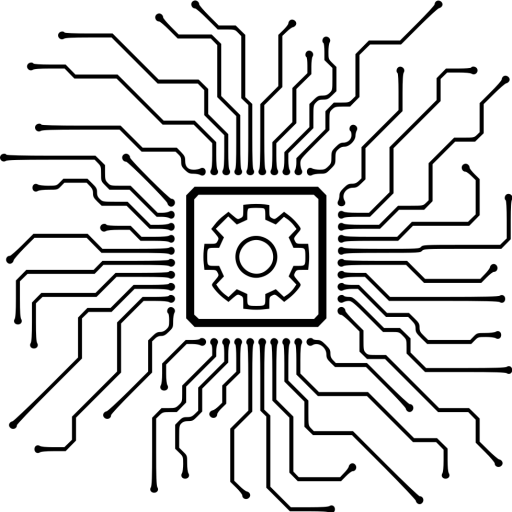The world of social care has changed a lot in recent years. Digital transformation in human services is a big change in how we work today.
Healthcare has seen big changes thanks to technology. This shows how technology can change social care systems. New trends are making services better today and ready for tomorrow’s challenges.
This change brings new chances for making services more accessible and efficient. But, it also brings complex challenges that need careful thought.
The mix of digital solutions and care that focuses on people is key. Technology helps us move forward, but the personal touch is what makes services truly good in social care.
The Evolution of Human Services Through Technology
Human services have changed a lot with technology. This change has made a big difference in how work is done. It has moved from old ways to new tech solutions.
This change is like other big changes in society. But it also meets the special needs of human services. Keeping client information safe and building strong relationships is always important.
From Paper-Based to Digital Systems
The move from paper to digital records was a big step. Old paper files and documents were replaced by digital databases and cloud storage.
This change to digital systems social services made managing information better and safer. Workers could quickly find and update client details.
Using electronic systems cut down on paperwork. This let workers spend more time with clients.
Early Technological Adoptions in Social Work
The start of historical technology adoption in human services was with simple computers and tools. These early steps changed how services were recorded and given.
In healthcare, for example, infusion pumps replaced frequent injections. This idea of making things easier has spread to social work.
At first, people were hesitant about new tech. But as its benefits showed, they started to accept it. The sector saw that digital innovation is key to tackling today’s challenges.
This early phase of social work digitisation laid the groundwork for today’s tech use. Now, basic computer skills are a must for human services staff.
Technology has opened up new ways to deliver services while keeping the human touch. This mix of old and new is what keeps the sector growing.
How Has Technology Changed the Delivery of Human Services
The digital world has changed how human services groups work and care for people. Two big changes have made a big difference in how services are given today.

Telehealth and Remote Consultations
Virtual healthcare has changed how we get help, even more so during the pandemic. Telehealth services have made it easier for doctors to help people in far-off places and those who can’t move easily.
Benefits of Virtual Health Services
Virtual health care has many good points. It saves time and travel, and it keeps care quality high. People can get help without missing work or finding a way to get there.
Other big pluses include:
- More help for people in rural areas
- Less chance of getting sick during health crises
- Flexible times for both doctors and patients
- Keeping care going during emergencies or bad weather
Challenges in Implementing Telehealth
Even with the remote consultations benefits, starting it up is hard. Some older people and those in poor areas don’t have the right tech. Privacy and money issues also make it hard to use widely.
Cloud-Based Case Management Systems
Today, human services groups use digital tools to manage care and client info. These systems have changed old paper ways into new digital ones.
Examples: Salesforce and Microsoft Dynamics
Platforms like Salesforce for Salesforce social services and Microsoft Dynamics help human services a lot. They have tools for tracking cases, keeping records, and working together with other groups.
Key features include:
- Centralised client databases with secure access controls
- Automated appointment scheduling and reminder systems
- Customisable reporting and analytics dashboards
- Integrated communication tools for team coordination
Improving Efficiency and Collaboration
Good cloud case management systems make things run smoother. They cut down on paperwork and help services work better together. Microsoft Dynamics human services solutions are great at making workflows between teams smooth.
| Feature | Traditional System | Cloud-Based System | Impact Improvement |
|---|---|---|---|
| Data Access | Single location | Anywhere access | 85% faster |
| Case Updates | Manual entry | Real-time sync | 70% time reduction |
| Team Collaboration | Email/phone | Integrated platform | 60% more efficient |
| Reporting | Manual compilation | Automated generation | 90% time saved |
These tech changes keep getting better, helping human services work better and more efficiently.
Enhancing Data Management and Analytics
Modern human services organisations are using advanced data technologies to change how they work and help people. They use big data and analytics to understand what clients need better. This helps them use their resources wisely.
Big Data and Predictive Analytics in Social Services
Big data helps human services providers see what the community might need before it’s a big problem. This way, they can get ready and use resources well. It makes their support systems more efficient and effective.
Predictive analytics helps organisations see how well their programs work. It shows which programs are most effective. For example, the Hillside Work-Scholarship Connection in Rochester, New York, uses predictive models to help at-risk youth.
These tools make decision-making based on facts, not just guesses. They help organisations see trends and patterns they couldn’t before. This lets them plan better and use resources more wisely.
| Analytics Type | Primary Function | Impact on Services | Implementation Challenge |
|---|---|---|---|
| Descriptive Analytics | Historical data analysis | Understand past service usage | Data quality issues |
| Predictive Analytics | Future trend forecasting | Proactive resource allocation | Model accuracy concerns |
| Prescriptive Analytics | Optimal solution recommendation | Improved intervention strategies | Computational complexity |
Ethical Considerations and Data Privacy
Data analytics raises big ethical questions about privacy and personal information. Human services deal with very sensitive client data. They need to keep it safe.
Organisations must balance the good of data insights with protecting clients’ privacy. They need to be clear about how they use client data. This makes sure clients know how their information is used.
There’s also the risk of using predictive models in a way that’s unfair. These models need to be checked for bias. This ensures they don’t make things worse for some groups.
Recent research on data privacy ethics says organisations need strong data policies. These policies should cover how data is collected, stored, and used.
Good data management in social services also means training staff on handling data ethically. Organisations should focus on keeping client privacy while using data to improve services.
Increasing Accessibility and Inclusivity
Technology has changed how we get help from human services. It brings both good and bad news. Digital tools make things easier, but they also show us who’s left behind.
Mobile Applications and Online Portals
Mobile apps for social services have changed how we interact with services. They let us access help anytime, anywhere. We can book appointments, send documents, and get important info without going to an office.
The Australia Department of Human Services is a great example. They’ve made services more accessible through mobile and online options. This gives clients more control over their experience.
Online portals are key for modern service delivery. They make things easier for everyone. Clients can get help from anywhere with internet.

But, there are big challenges. A study in Huelva, Spain found that 40% of users don’t have internet at home. And 74% don’t use public internet. This digital gap hurts the most vulnerable people.
Assistive Technologies for Disabled Individuals
Assistive technologies are a big step forward for inclusive services. They include tools like screen readers and voice recognition software. They help people be more independent.
Modern assistive technologies include:
- Screen readers that convert text to speech for visually impaired users
- Voice-controlled interfaces for individuals with mobility challenges
- Adaptive keyboards and communication devices for those with motor impairments
These tools show how technology can make services fairer. But, it’s important for organisations to use both new and old technologies. This way, everyone can get the help they need.
The challenge is to find the right balance. Digital tools help many, but we must keep other ways to reach people. This ensures everyone in the community can get the help they need.
Conclusion
Technology is changing human services more than anything else. It’s moving from just reacting to actually helping before problems start. This change is thanks to digital tools that make care more personal and use resources better.
The future looks even brighter with more artificial intelligence and Internet of Things. These technologies will make human services even more effective.
But, we must make sure these changes are good for people. We need to keep focusing on what matters most: the people we help. It’s important to keep improving and do it in a way that respects everyone’s privacy and wellbeing.
We also need to make sure everyone can use these new technologies. This means tackling the digital divide to include everyone, no matter who they are or where they live.
Organisations that do well will use new tech but not forget the human touch. This way, technology helps us, not replaces us. It makes sure we can keep providing the best care to those who need it most.







